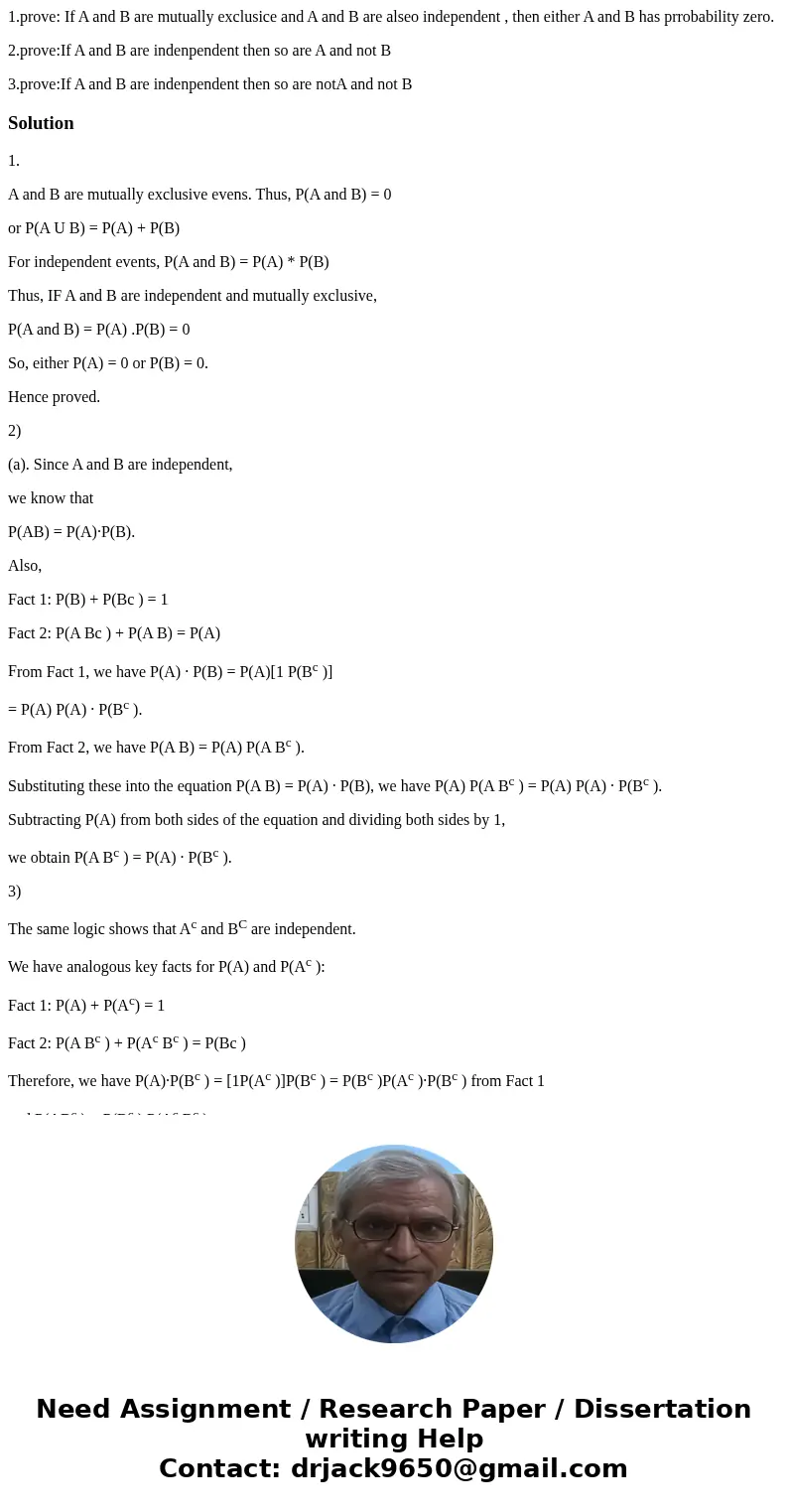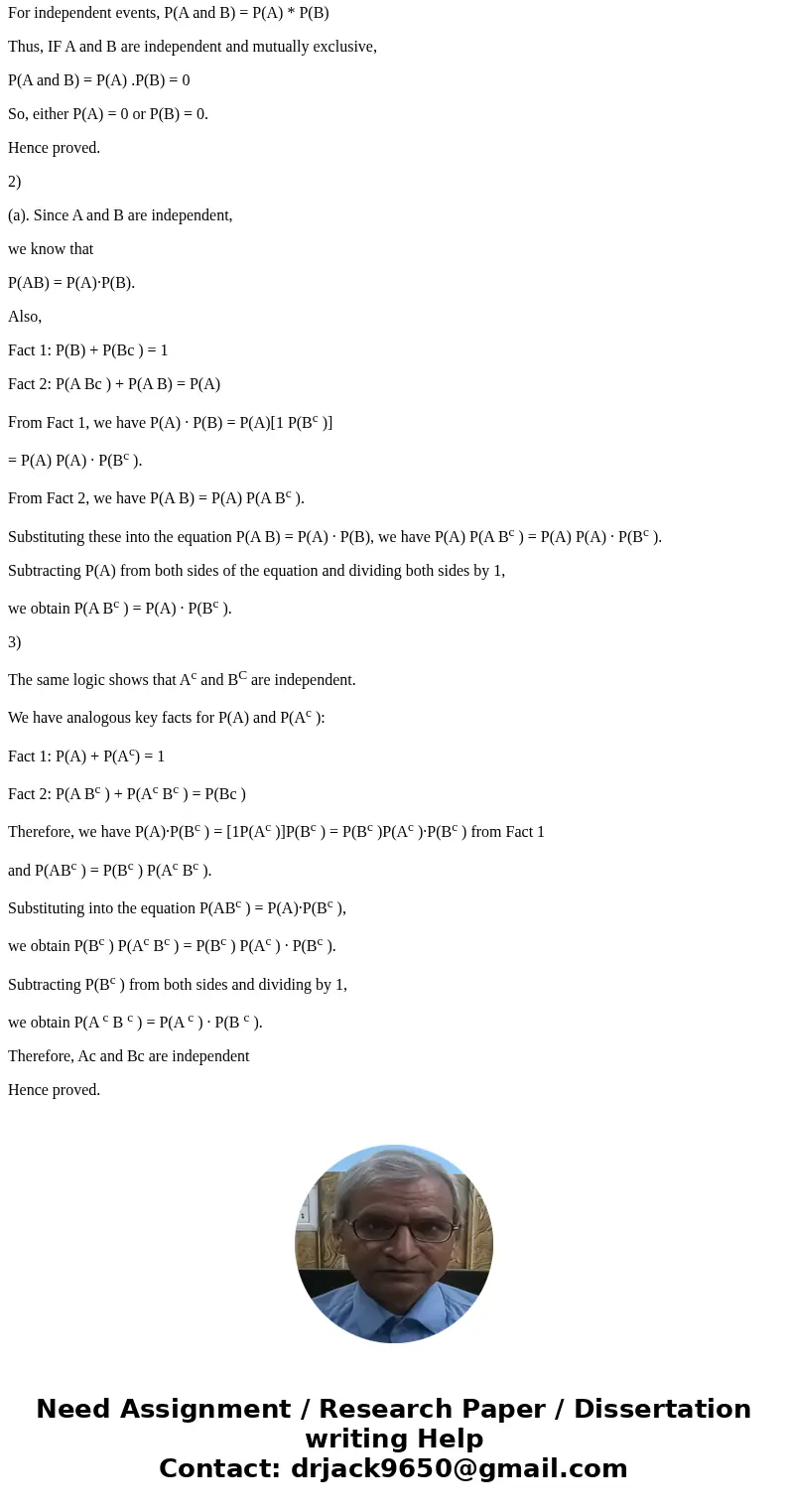1prove If A and B are mutually exclusice and A and B are als
1.prove: If A and B are mutually exclusice and A and B are alseo independent , then either A and B has prrobability zero.
2.prove:If A and B are indenpendent then so are A and not B
3.prove:If A and B are indenpendent then so are notA and not B
Solution
1.
A and B are mutually exclusive evens. Thus, P(A and B) = 0
or P(A U B) = P(A) + P(B)
For independent events, P(A and B) = P(A) * P(B)
Thus, IF A and B are independent and mutually exclusive,
P(A and B) = P(A) .P(B) = 0
So, either P(A) = 0 or P(B) = 0.
Hence proved.
2)
(a). Since A and B are independent,
we know that
P(AB) = P(A)·P(B).
Also,
Fact 1: P(B) + P(Bc ) = 1
Fact 2: P(A Bc ) + P(A B) = P(A)
From Fact 1, we have P(A) · P(B) = P(A)[1 P(Bc )]
= P(A) P(A) · P(Bc ).
From Fact 2, we have P(A B) = P(A) P(A Bc ).
Substituting these into the equation P(A B) = P(A) · P(B), we have P(A) P(A Bc ) = P(A) P(A) · P(Bc ).
Subtracting P(A) from both sides of the equation and dividing both sides by 1,
we obtain P(A Bc ) = P(A) · P(Bc ).
3)
The same logic shows that Ac and BC are independent.
We have analogous key facts for P(A) and P(Ac ):
Fact 1: P(A) + P(Ac) = 1
Fact 2: P(A Bc ) + P(Ac Bc ) = P(Bc )
Therefore, we have P(A)·P(Bc ) = [1P(Ac )]P(Bc ) = P(Bc )P(Ac )·P(Bc ) from Fact 1
and P(ABc ) = P(Bc ) P(Ac Bc ).
Substituting into the equation P(ABc ) = P(A)·P(Bc ),
we obtain P(Bc ) P(Ac Bc ) = P(Bc ) P(Ac ) · P(Bc ).
Subtracting P(Bc ) from both sides and dividing by 1,
we obtain P(A c B c ) = P(A c ) · P(B c ).
Therefore, Ac and Bc are independent
Hence proved.


 Homework Sourse
Homework Sourse